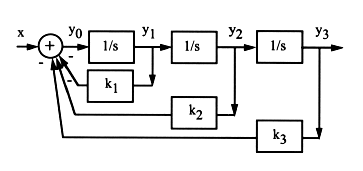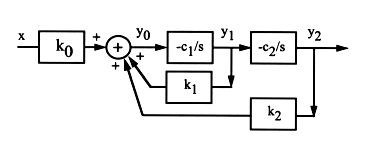


Next: Appendix
Up: Chapter 6: Active Filter
Previous: Butterworth filters
Higher than first order systems can be built with multiple integrators,
as shown here for a third order system:

From the diagram, we can get
But we also have
i.e.,
we get the transfer function
Second order system by 2 integrators

From the diagram, we can get
substituting the first two equations into the last one, we get
from which we obtain the transfer function as
which is a second order system. In particular, if  , we have
, we have
Comparing this with the canonical 2nd order system transfer function
we see that we can let  and
and  . Moreover,
. Moreover,  ,
i.e., the feedback from the output should be negative.
,
i.e., the feedback from the output should be negative.  is a constant
scalar which can take any value.
is a constant
scalar which can take any value.



Next: Appendix
Up: Chapter 6: Active Filter
Previous: Butterworth filters
Ruye Wang
2019-05-07









